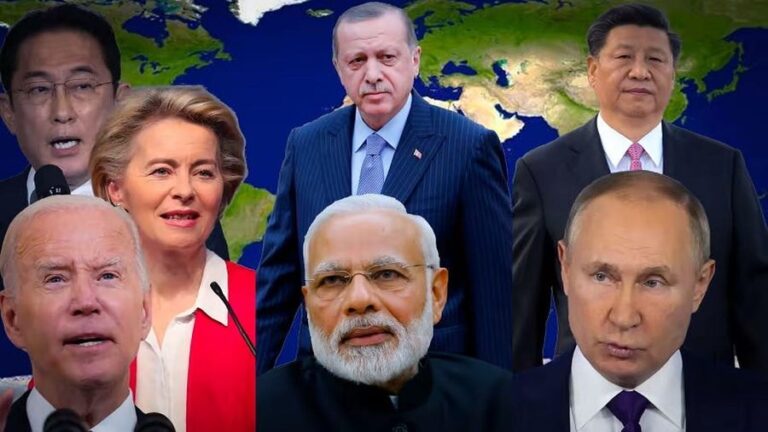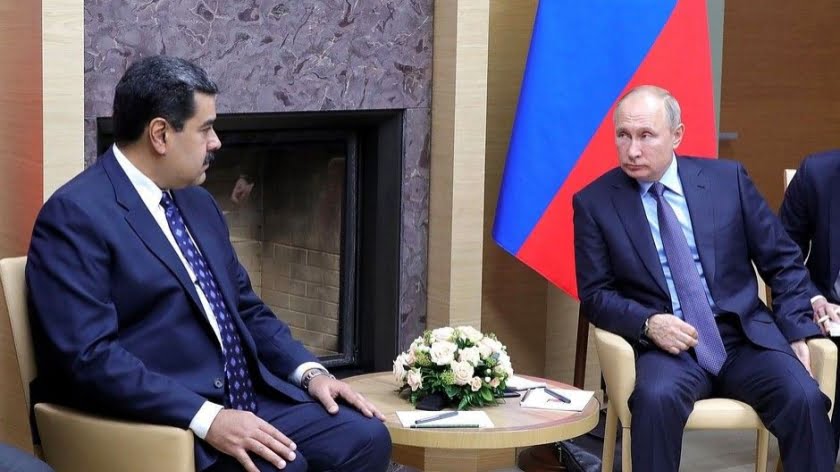The Chinese-Indian Disengagement Decision Is a Direct Result of the Ukrainian Conflict
What the US hadn’t incorporated into its grand strategic calculations was that the success of its structurally identical divide-and-rule scheme against Russia and Ukraine would positively influence China and India’s perceptions of one another to the point of inspiring them to pragmatically manage their security dilemma.
China and India agreed on Thursday to the mutual disengagement of their military forces from the disputed frontier in a milestone development that represents these two multipolar Great Powers making tangible progress towards their shared grand strategic goal of jointly pioneering the Asian Century. The security dilemma that had hitherto threatened to disastrously divide and rule them the detriment of Eurasia is now in the process of being responsibly managed.
As a brief backgrounder, their preexisting border disputes that date back to the imperial era formed the basis of mutual suspicions, which were exacerbated by the US’ divide-and-rule information warfare campaign against them. America actively sought to manipulate their perceptions of one another in order to ultimately turn India into its proxy for “containing” China. These Great Powers eventually clashed over the Galwan River Valley in summer 2020, which represented a dangerous low-point in their ties.
Instead of the all-out war that Washington wanted and in spite of many observers’ expectations, Beijing and Delhi surprisingly pulled back from the brink even though tensions continued to boil up until recently. Prior rounds of talks failed to achieve any tangible progress in de-escalating tensions, though neither seemed prepared to unilaterally worsen the situation at risk of their own interests, to say nothing of their region’s and Eurasia’s more broadly.
The core of the Chinese-Indian security dilemma isn’t so much their unresolved border disputes from the imperial era, but their mutual suspicions of one another’s grand strategic intentions, though the US manipulated views of the first-mentioned in order to worsen the second. The largely unpopulated Himalayan frontier between them can be delineated through mutual compromises without harming either’s objective national interests, but this is impossible without the restoration of trust.
America is keenly aware of this, hence why it twisted perceptions about this sensitive issue in ways that attempted to inflame domestic public opinion in both countries so as to artificially manufacture grassroots resistance to such an outcome. From there, it took advantage of comparatively less significant but nevertheless still important issues of mutual concern such as perceived technological and trade disparities in order to catalyze a self-sustaining cycle of suspicion and resultant escalation.
The latest US-provoked phase of the Ukrainian Conflict was a game-changer, however, since it directly led to both multipolar Great Powers correcting their perceptions of the other. India realized the lengths to which its new military-strategic partner will go to divide and rule neighboring pairs of countries in order to advance its hegemonic interests. Moreover, the US very aggressively pressured India to sanction and condemn Russia, which Delhi declined to do since that would go against its own interests.
In response, a malicious information warfare campaign was launched by the MSM against this South Asian civilization-state, which immediately showed its decisionmakers, strategists, and the society that they represent that America had unfriendly intentions towards them. Delhi’s redoubling of its principled neutrality towards the Ukrainian Conflict strengthened perceptions of its strategic autonomy in the Global South, which China paid very close attention to and appreciated.
The People’s Republic then began to gradually re-evaluate its prior assessment of India’s role in Eurasia, which started to shift from perceiving it as an obstacle to multipolarity to an indispensable asset. This process was brought about purely by India’s proud refusal to sacrifice its objective national interests for the purpose of pleasing the US, the latter of which wanted to coerce that country into becoming its largest vassal state in the New Cold War. Accordingly, China came to acknowledge India’s independence.
The past six months therefore led to India wising up to the US’ long-running scheme to erode its hard-earned strategic autonomy in parallel with China finally concluding that this neighboring Great Power truly had multipolar intentions all along. Neither no longer regarded the other as an irredeemable threat to their interests that required a never-ending cycle of tit-for-tat military-strategic moves to deter, hence the consensual decision to mutually disengage their military forces from the disputed frontier.
The unresolved border dispute was merely the fuse that the US wanted to spark in order to doom their shared grand strategic goal of jointly pioneering the Asian Century that would thus doom its own declining unipolar hegemony if it succeeded. To that end, the MSM manipulated the perceptions that each of those two’s decisionmakers, strategists, and societies had of one another in order to create the security dilemma that the US hoped would be insurmountable and thus inevitably divide and rule Asia.
What Washington hadn’t incorporated into its grand strategic calculations was that the success of its structurally identical divide-and-rule scheme against Moscow and Kiev would positively influence Beijing and Delhi’s perceptions of one another to the point of inspiring them to pragmatically manage their security dilemma. Dividing Russia from Ukraine, and consequently from Europe, isn’t as significant in sabotaging the global systemic transition to multipolarity as dividing China and India would be.
That’s not to say that the US hasn’t somewhat succeeded in disrupting part of the emerging Multipolar World Order, but just that it’s been far less successful than it planned after China and India just decided to do what’s needed in order to stop America’s attempted replication of the Russian-Ukrainian scenario in Asia. Considering that their continent is the center of global processes, this means that their present rapprochement has the chance to supercharge multipolarity and thus deal a death blow to unipolarity.







